These Are The Most Aggressive Fish In The Ocean Right Now
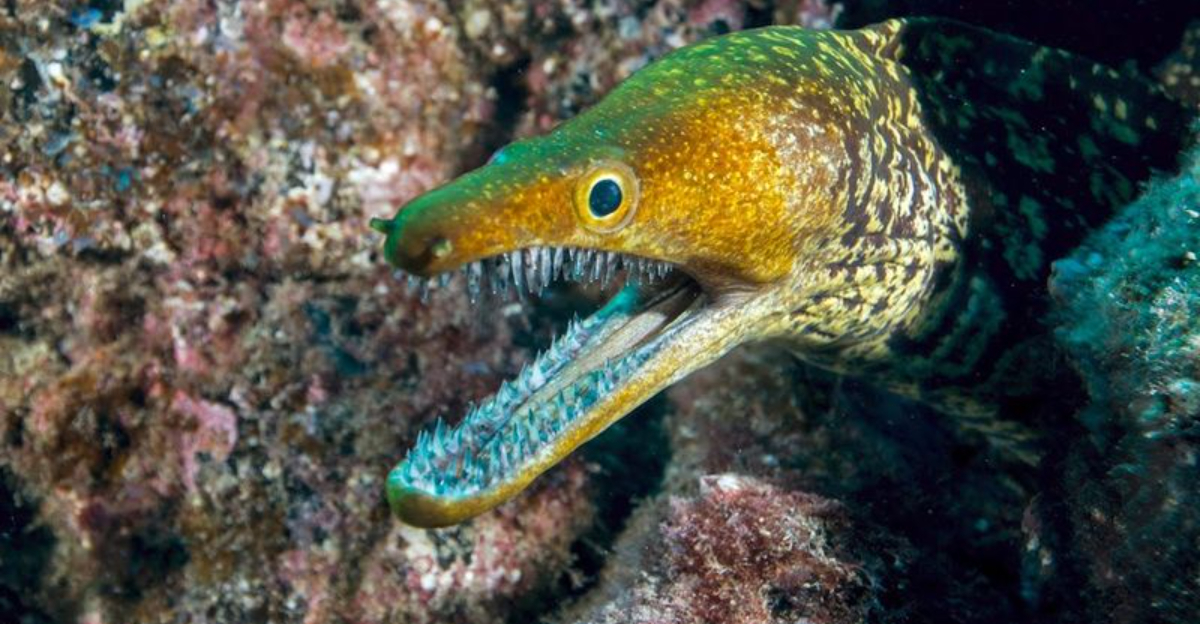
The ocean harbors some of nature’s most formidable predators. From razor-sharp teeth to lightning-fast attacks, these underwater hunters have evolved into perfect killing machines.
Whether defending territory or hunting prey, these aggressive fish command respect from divers and marine biologists alike. Let’s explore the 12 most aggressive fish currently dominating our oceans.
1. Great White Shark
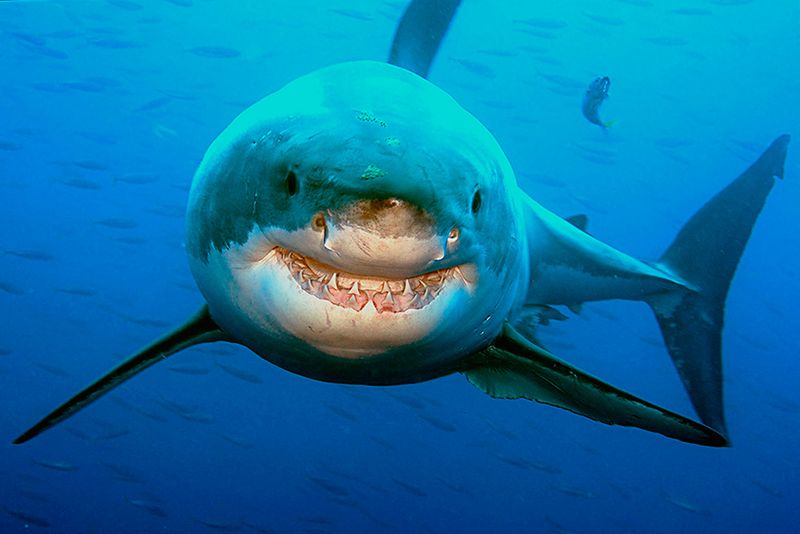
Kings of the ocean with jaws powerful enough to snap bones like twigs. Great whites can detect a single drop of blood in 25 gallons of water, making them exceptional hunters that rarely miss their target.
Growing up to 20 feet long and weighing over 4,000 pounds, these massive predators use their torpedo-shaped bodies to ambush prey at speeds reaching 35 mph. They’re responsible for more unprovoked attacks on humans than any other shark species.
Female great whites are typically larger than males and can live up to 70 years in the wild. Despite their fearsome reputation, they’re actually quite selective eaters, often taking a “sample bite” before deciding whether to continue feeding.
2. Barracuda

Lightning-fast ambush predators armed with fang-like teeth that can slice through flesh with surgical precision. Barracudas hover motionless in the water, then strike at speeds that make them nearly invisible to the human eye.
Silver-bodied and reaching lengths of up to 6 feet, these torpedo-shaped hunters are attracted to anything shiny or reflective in the water. This unfortunate attraction includes jewelry and dive equipment, sometimes leading to mistaken attacks on swimmers.
Schools of young barracuda can be particularly aggressive when feeding. Their reputation for ferocity is well-earned, though unprovoked attacks on humans remain relatively rare compared to their intimidating appearance.
3. Bull Shark
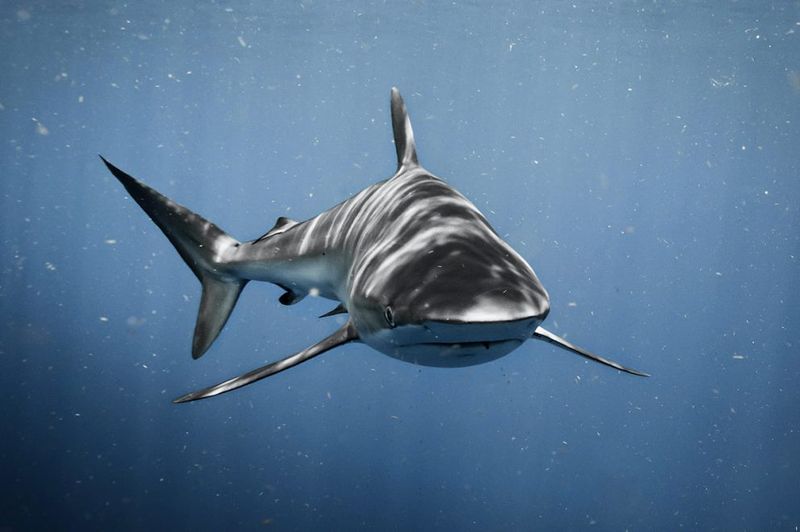
Pound for pound, the most aggressive shark species roaming our oceans today. Bull sharks possess the highest testosterone levels of any animal on earth, making them incredibly territorial and prone to attack with little provocation.
Unlike most sharks, bull sharks can survive in both saltwater and freshwater, often swimming miles upriver where people least expect to encounter them. Their stocky build houses powerful jaw muscles that can deliver one of the strongest bites in the animal kingdom.
Remarkably adaptable, these 11-foot predators hunt in murky, low-visibility waters using electroreceptors to detect prey. This combination of aggression, strength, and habitat flexibility makes them particularly dangerous to humans.
4. Moray Eel
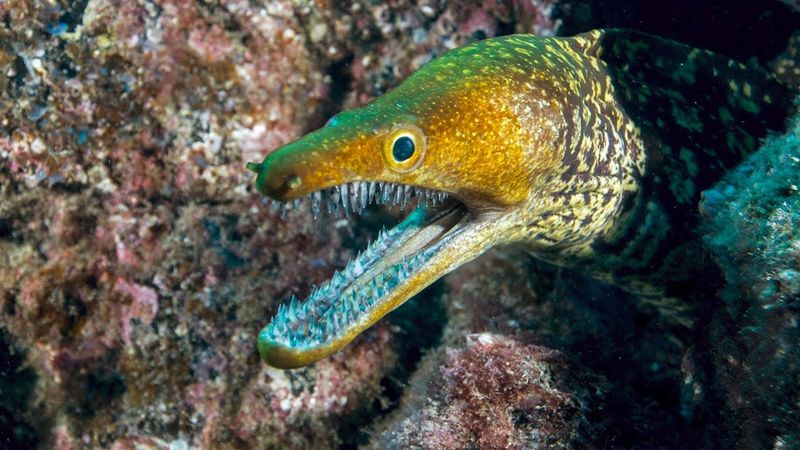
Lurking in rocky crevices with jaws that would make a horror movie director proud. Moray eels possess not one but two sets of jaws – the visible ones and a second pharyngeal jaw that shoots forward to grab prey and drag it down their throat.
Highly territorial, these serpentine predators fiercely defend their homes against intruders. Their poor eyesight means they rely on an acute sense of smell, sometimes mistaking fingers for food when divers get too close.
Most species grow between 4-5 feet long, though the largest can reach an impressive 13 feet. Their skin lacks protective scales and instead produces a toxic mucus coating that can cause painful infections if you’re unfortunate enough to be bitten.
5. Oceanic Whitetip Shark
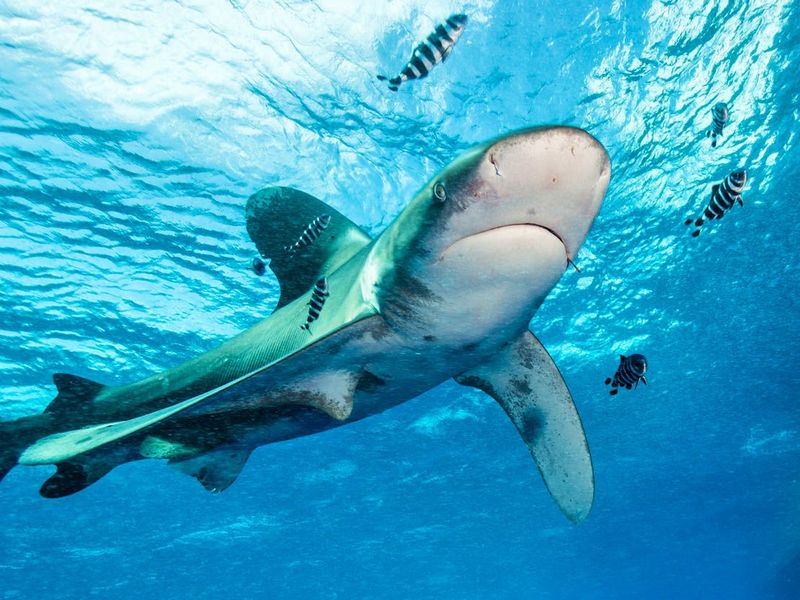
Naval historian Jacques Cousteau once called these sharks “the most dangerous of all sharks” for good reason. Oceanic whitetips are thought responsible for more human fatalities than all other shark species combined, primarily from shipwreck and plane crash survivors stranded at sea.
Slow-moving but relentless, these sharks patrol the open ocean where food is scarce. This scarcity has evolved them into opportunistic feeders that rarely pass up a potential meal.
Distinguished by their rounded white-tipped fins, these 10-foot predators follow ships for weeks waiting for garbage disposal.
Their boldness is legendary among sailors – they’ll often bump and investigate potential prey before attacking, showing unusual persistence for a shark species.
6. Piranha

Few fish strike fear like the red-bellied piranha of South America’s Amazon Basin. Despite their small size (rarely exceeding 14 inches), these fish pack razor-sharp teeth that interlock perfectly for maximum cutting power.
Hunting in schools that can number in the thousands, piranhas communicate using sounds undetectable to human ears. When frenzied by blood in the water, they can strip a large animal to bone in minutes – though such feeding events are relatively rare in nature. Contrary to Hollywood depictions, unprovoked attacks on humans are uncommon.
However, during dry seasons when food becomes scarce, their aggression increases dramatically. Low water levels concentrate both piranhas and potential prey, creating dangerous conditions for anything that enters their territory.
7. Titan Triggerfish
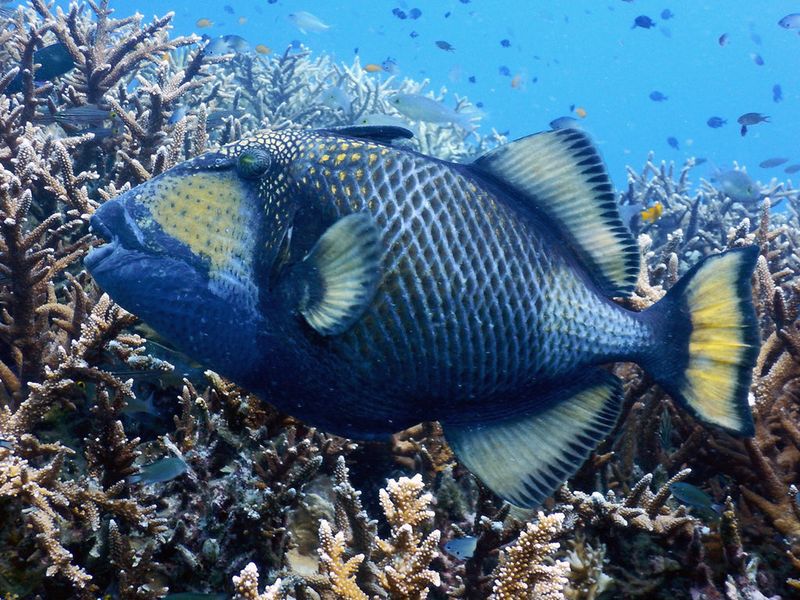
Reef divers fear few fish more than the territorial titan triggerfish. During nesting season, these colorful but aggressive fish defend cone-shaped territories extending upward from their eggs – a fact many snorkelers discover too late when swimming above nests.
Armed with powerful jaws and chisel-like teeth evolved for crushing coral and shellfish, titans can inflict serious wounds on human intruders. They’re remarkably intelligent, using jet-like water streams to flip sea urchins over, exposing their vulnerable undersides.
Growing up to 2.5 feet long, these fish display remarkable persistence when threatened. Unlike most reef fish that flee when approached, titans stand their ground and often charge repeatedly.
Their attacks typically target the face and fins of divers, making them particularly intimidating despite their relatively small size.
8. Bluefin Tuna

Muscle-bound speedsters that represent nature’s perfect hunting machine. Bluefin tuna can accelerate faster than a Porsche, reaching 40 mph in seconds to chase down prey fish that stand little chance of escape.
Weighing up to 1,500 pounds and measuring 15 feet, these massive predators maintain body temperatures significantly warmer than surrounding waters. This unique adaptation powers their incredible swimming performance and allows them to hunt in colder waters where prey has fewer escape options.
While not aggressive toward humans, their feeding frenzies display remarkable violence and coordination.
Schools work together to herd smaller fish into tight “bait balls” before tearing through them with military precision. Their powerful tails can easily knock a diver unconscious during these high-speed feeding events.
9. Needlefish
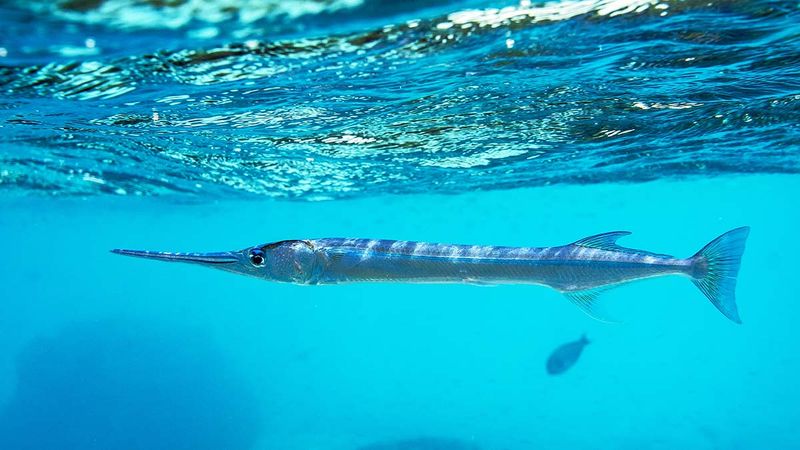
Slender assassins that combine incredible speed with deadly weaponry. Needlefish possess elongated beaks filled with sharp teeth, but their most dangerous feature might be their jumping ability. When startled or hunting, these fish leap from the water at speeds approaching 40 mph.
Night fishermen in tropical waters have suffered serious injuries and even deaths when needlefish have launched themselves like living javelins, impaling victims with their rigid, needle-like beaks. Most species reach about 3 feet long, though giants can grow to 5 feet.
Their silvery bodies make them difficult to spot in moonlit waters, adding to their danger. Unlike many aggressive fish, needlefish don’t intentionally attack humans – their injuries result from accidental collisions during their spectacular aerial jumps.
10. Stonefish

Masters of disguise with a deadly defense system. Stonefish claim the title of world’s most venomous fish, with dorsal spines that deliver excruciating pain and potentially fatal toxins to predators – or unfortunate barefoot beachgoers.
Perfectly camouflaged to resemble encrusted rocks or coral, these ambush predators lie motionless on the seafloor waiting for prey fish to swim within striking distance. Their attack speed is astonishing – they can snap up passing fish in less than 0.015 seconds.
Found primarily in the Indo-Pacific region, stonefish grow to about 20 inches long. Their aggression lies in their passive defense strategy – rather than fleeing from threats, they remain still, allowing their venomous spines to deal with anything that steps on or threatens them.
11. Goliath Tigerfish
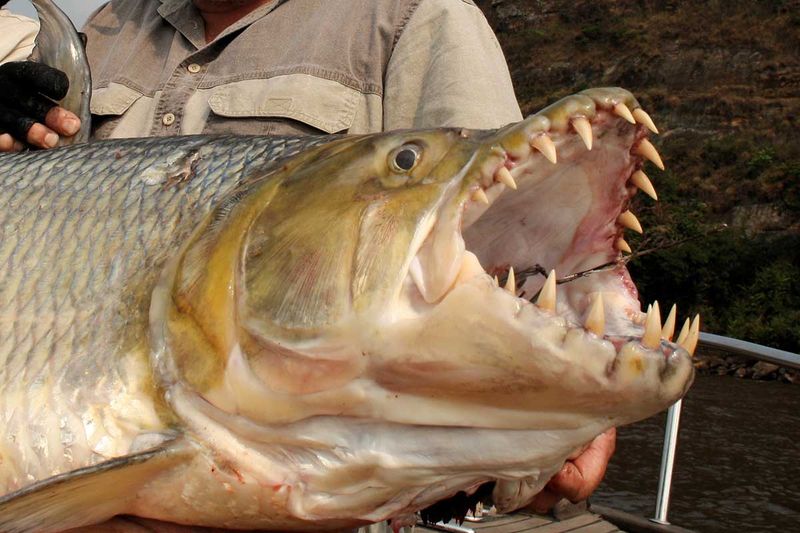
Africa’s freshwater monster with a mouthful of nightmare-inducing teeth. Goliath tigerfish sport 32 razor-sharp teeth arranged in interlocking rows that can slice through prey with horrifying efficiency. Native to the Congo River system, these fearsome predators grow up to 5 feet long and weigh over 150 pounds.
They’re known to attack prey larger than themselves, including small crocodiles and even humans on rare occasions. Remarkably strong swimmers, they can burst through strong currents to ambush prey with explosive force.
Local fishermen tell stories of tigerfish leaping into boats to attack captured fish. Their aggression is so legendary that some African tribes historically believed them to be possessed by evil spirits.
12. Saltwater Crocodile
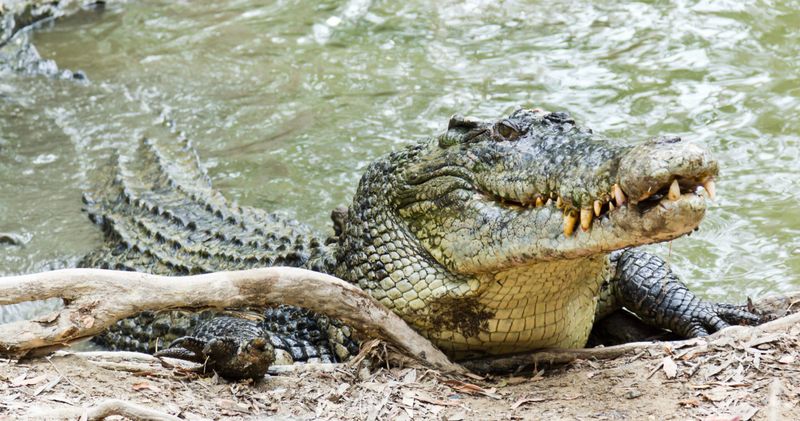
While technically reptiles, saltwater crocodiles spend enough time hunting in ocean waters to earn their place among marine predators. These living dinosaurs represent the absolute apex of aquatic aggression, responsible for hundreds of human deaths annually.
Growing to over 20 feet long and weighing more than a ton, salties can swim at 15-18 mph in short bursts. Their bite force measures an astonishing 3,700 pounds per square inch – strong enough to crush a human skull like an eggshell.
Masters of ambush, they can remain motionless for hours before exploding into action with surprising speed. Their ability to travel long distances through open ocean allows them to colonize new territories, making them true marine predators despite their reptilian classification.






